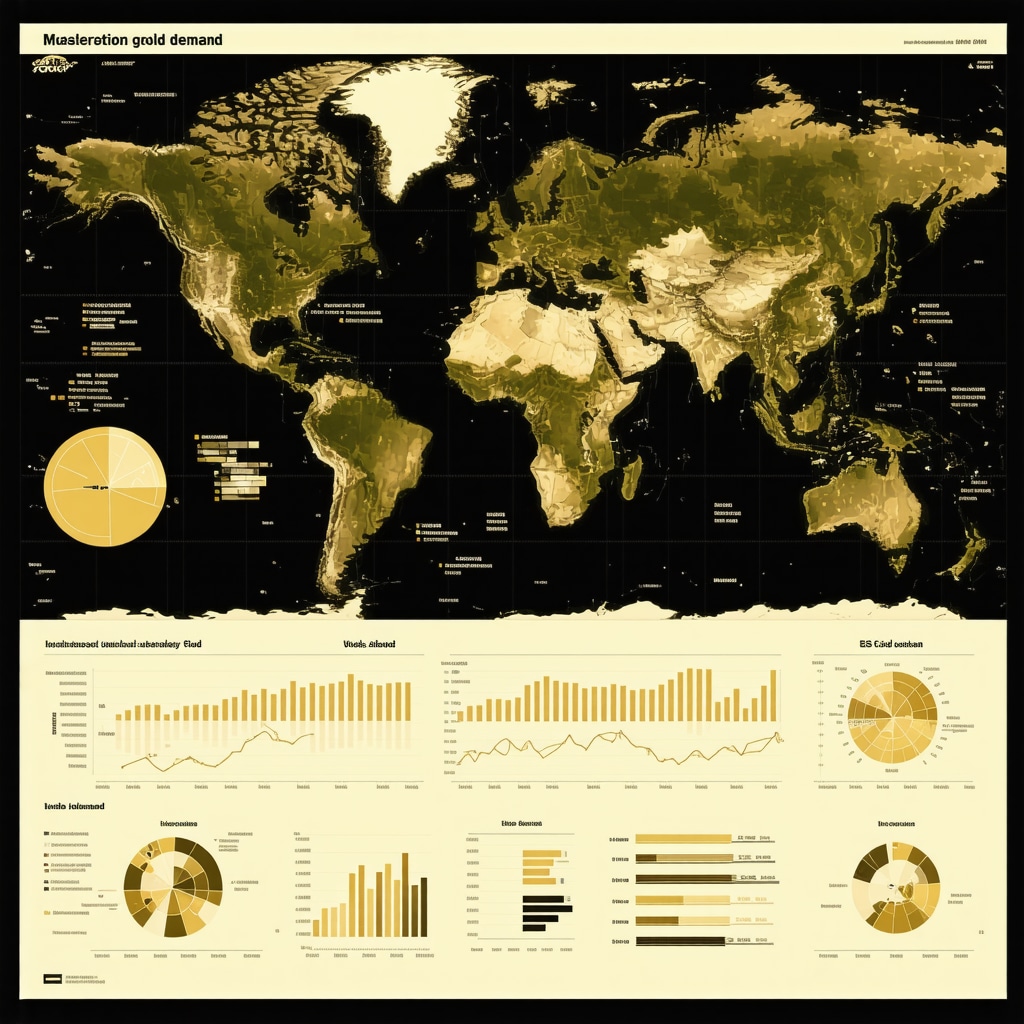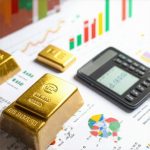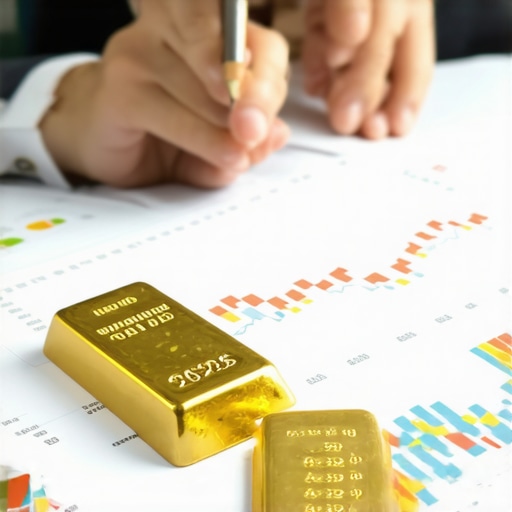Decoding the Dynamics Behind Gold Demand: A Gateway to Smarter Investing
Gold has long been revered as a financial sanctuary, but its demand is far from static. For intelligent investors, recognizing the subtle shifts in gold demand offers a strategic edge in navigating the complex global markets. This exploration delves beyond the surface, unveiling the multifaceted factors that influence gold demand and providing actionable insights to harness these trends effectively.
Global Economic Undercurrents: The Invisible Hands Shaping Gold Demand
The appetite for gold is intricately linked to macroeconomic variables such as inflation rates, currency fluctuations, and geopolitical tensions. During times of economic uncertainty or soaring inflation, gold traditionally serves as a hedge, attracting increased investment. For example, the 2020 pandemic-induced market volatility saw a surge in gold purchases as a safeguard against currency devaluation and stock market instability. Understanding these correlations enables investors to anticipate demand surges and adjust their portfolios accordingly.
Technological and Industrial Influences: Beyond Investment and Jewelry
While investment and jewelry dominate gold consumption, industrial applications—particularly in electronics and medical devices—play a growing role in demand shifts. Advances in technology can either amplify gold demand, as seen in emerging tech requiring gold components, or diminish it when alternatives arise. Investors attuned to these subtle supply-demand nuances gain a competitive advantage, blending traditional investment wisdom with an awareness of evolving industrial trends.
How Do Central Bank Policies and Reserves Impact Gold Demand?
Central banks are pivotal influencers in the gold market. Their buying or selling activities, driven by monetary policies and reserve diversification strategies, significantly shift demand patterns. For instance, several central banks in emerging markets have increased gold reserves to bolster financial stability and reduce reliance on the US dollar. Tracking these institutional movements offers intelligent investors foresight into potential price trajectories and market sentiment.
Investor Behavior and Sentiment: The Psychological Pulse of Gold Markets
Investor sentiment, shaped by market news, economic forecasts, and global events, often triggers shifts in gold demand. Behavioral finance insights reveal how fear or optimism can lead to rapid influxes or sell-offs. Recognizing these psychological drivers helps investors avoid herd mentality pitfalls and capitalize on contrarian opportunities. By aligning investment decisions with informed sentiment analysis, one can navigate gold market volatility more confidently.
Strategic Takeaways: Crafting Your Gold Investment Approach
Intelligent investors synthesize these demand factors to tailor their strategies—whether through physical bullion, ETFs, or gold mining stocks. Diversifying across these instruments can balance risk and optimize returns, especially when aligned with current demand trends. For a comprehensive guide on diversifying with gold ETFs, consider exploring how gold ETFs can diversify your portfolio and reduce risk. This approach not only hedges against market fluctuations but also leverages varying demand drivers effectively.
Curious about how these gold demand shifts might reshape your portfolio in the near future? Share your thoughts or questions below to join a community of savvy investors exploring these dynamic trends.
For a deeper dive into the interplay of supply and demand shaping gold prices, the World Gold Council offers authoritative research and market analysis that enriches understanding and decision-making.
Gold Demand in Emerging Markets: A Personal Perspective
Reflecting on my own experiences investing in gold, one aspect that continually fascinates me is the rapid growth of gold demand in emerging markets. Countries like India and China are not just cultural hubs for gold jewelry but increasingly significant players in investment demand. This trend isn’t just about tradition; it’s also tied to rising wealth and financial education. I’ve noticed that understanding these markets’ unique drivers—such as festivals, weddings, and government policies—can help investors anticipate demand spikes and make more informed decisions.
For instance, during the Diwali season in India, gold purchases can soar as families invest in physical gold for auspicious reasons. Similarly, China’s growing middle class often sees gold as a safe asset amid domestic economic shifts. Paying attention to these nuances has personally helped me optimize timing in gold-related investments.
Are You Considering How Global Supply Constraints Might Impact Gold Prices?
One question I find myself pondering—and often discussing with fellow investors—is how global supply factors might influence gold’s future value. Mining output, geopolitical tensions in key mining regions, and environmental regulations can constrain supply and therefore push prices higher. In fact, according to the World Gold Council, supply disruptions have historically created upward price pressure, especially when demand remains steady or climbs.
Personally, I’ve seen how tracking mining news and geopolitical developments adds a valuable layer of insight. Rather than relying solely on price charts or macroeconomic data, considering supply-side dynamics offers a more holistic view. This approach has helped me avoid surprises during times of unexpected production halts or regulatory changes.
Integrating Gold into Your Portfolio: Practical Tips from Experience
Having navigated various market cycles, I’ve learned that diversification within gold investments is crucial. Physical gold —whether coins or bars—offers tangible security, but liquidity can sometimes be a hurdle. Gold ETFs provide ease of trading and exposure without the storage headaches. And gold mining stocks can offer growth potential, albeit with higher volatility.
For those starting out or looking to refine their approach, I recommend exploring resources like how gold ETFs can diversify your portfolio and reduce risk to better understand the balance between accessibility and direct ownership. Over time, combining these instruments helped me tailor a portfolio that fits my risk tolerance and investment goals.
Moreover, staying attuned to current demand trends—from central bank buying patterns to shifts in industrial usage—enables proactive adjustments rather than reactive moves. This dynamic strategy feels more empowering and aligned with market realities.
Have you noticed any particular gold demand trends influencing your investment choices? Feel free to share your experiences or questions below—I’d love to hear your insights and continue this conversation.
Unraveling the Impact of Geopolitical Shocks on Gold Demand: Expert Insights into Market Volatility
Geopolitical events, ranging from trade wars to armed conflicts, act as catalysts that sharply alter gold demand dynamics. These shocks create uncertainty that often propels investors towards gold’s safe haven status. Yet, the nuanced impact depends on the nature, scale, and duration of the event. For instance, while short-term conflicts may trigger immediate spikes in physical gold purchases, prolonged economic sanctions can induce central banks to adjust reserves strategically, influencing sustained demand patterns.
Understanding these subtleties requires monitoring real-time geopolitical intelligence alongside macroeconomic indicators. For example, the recent tensions in key mining regions not only disrupt supply chains but also amplify speculative demand, creating layered price pressures. Skilled investors who integrate geopolitical risk analysis into their gold demand models can better anticipate market inflections and position themselves advantageously.
How does geopolitical volatility reshape institutional gold buying strategies?
Institutional investors, such as sovereign wealth funds and central banks, recalibrate their gold holdings in response to geopolitical volatility to mitigate currency risks and diversify reserves. These entities often increase gold allocations during periods of heightened geopolitical uncertainty to hedge against potential currency depreciation and systemic risks. Conversely, easing geopolitical tensions can lead to portfolio rebalancing away from gold toward higher-yield assets.
According to a detailed report by the International Monetary Fund, institutional gold buying is closely correlated with geopolitical risk indices, underscoring the importance of this factor in strategic asset allocation.
Advanced Analytical Techniques for Forecasting Gold Demand Amid Technological Disruptions
The rapid evolution of technology introduces complex variables into gold demand forecasting. Emerging fields like quantum computing and advanced semiconductor manufacturing increasingly rely on gold’s unique conductive properties, yet innovations in material science sometimes threaten to reduce gold dependency. Employing machine learning algorithms that analyze patent trends, industrial consumption data, and substitute material developments can yield predictive insights into gold’s industrial demand trajectory.
This intersection of technology and gold demand demands a multi-disciplinary approach, combining data science with domain expertise. Investors leveraging such sophisticated analytical frameworks can anticipate shifts not only in volume but also in the quality of demand, distinguishing between investment-driven and industrial consumption changes for refined portfolio adjustments.
Environmental Regulations and Sustainable Mining: The New Frontier Impacting Gold Supply and Demand
As environmental consciousness intensifies globally, regulations targeting mining operations increasingly affect gold supply chains. Compliance costs, mine closures, and the push for sustainable extraction methods impact production volumes and timelines, inevitably influencing market supply and thereby demand pricing dynamics. Investors with an eye on ESG (Environmental, Social, and Governance) criteria must incorporate these factors into their gold market evaluations.
Moreover, the rise of recycled gold as a supply source, driven by enhanced collection and refining technologies, adds another layer of complexity to demand-supply equilibrium. Recognizing the growing significance of secondary gold markets can offer investors novel avenues for exposure and risk management.
Interested in integrating ESG considerations into your gold investment strategy or curious about how emerging technologies might disrupt traditional demand patterns? Connect with us to explore advanced insights and personalized guidance.
Geopolitical Turbulence and Its Ripple Effects on Gold Demand
Geopolitical disturbances remain a potent force in shaping gold market trajectories, but their impact extends beyond immediate price spikes. Investors equipped with nuanced geopolitical risk assessment tools can discern between transient demand fluctuations and structural shifts in institutional gold accumulation. Events such as trade embargoes, regional conflicts, or shifts in diplomatic alliances catalyze reallocation within sovereign wealth portfolios, often prioritizing gold as a hedge against systemic vulnerabilities in fiat currencies.
Decoding Institutional Reactions: How Do Geopolitical Volatilities Influence Gold Acquisition Strategies?
Institutional entities—central banks, sovereign funds, and multinational corporations—deploy gold strategically to mitigate exposure during periods of geopolitical uncertainty. According to the International Monetary Fund’s comprehensive report, gold purchasing patterns exhibit strong correlations with geopolitical risk indices, reflecting a flight-to-quality mechanism. This dynamic underscores the necessity for investors to monitor geopolitical developments closely and anticipate shifts in institutional demand that can preempt price movements.
Harnessing Predictive Analytics Amid Technological Disruptions in Gold Demand
The integration of advanced analytical methodologies, including machine learning and big data analytics, has revolutionized forecasting models for gold demand. By processing patent filings, supply chain data, and emerging material science breakthroughs, sophisticated algorithms can identify early indicators of shifts in industrial gold consumption. For example, the rise of alternative conductive materials or breakthroughs in quantum computing components may curtail traditional gold usage, while new biomedical applications could spur demand. This cross-disciplinary intelligence empowers investors to differentiate between transient market noise and fundamental demand alterations.
Sustainability and Regulatory Paradigms: ESG’s Emerging Role in Gold Market Dynamics
The accelerating emphasis on Environmental, Social, and Governance (ESG) standards profoundly affects gold supply chains and investor sentiment. Stricter environmental regulations impose operational constraints on mining activities, elevating production costs and potentially constricting output. Concurrently, the expansion of recycled gold markets driven by improved refining technologies introduces alternative supply streams, modifying demand-supply equilibria. Investors embracing ESG integration not only align with ethical imperatives but also gain foresight into supply-side constraints that could influence price trajectories.
Are you leveraging these advanced geopolitical, technological, and ESG insights to refine your gold investment strategy? Engage with our expert community to deepen your understanding and tailor your portfolio to these evolving dynamics.

Frequently Asked Questions (FAQ)
What factors primarily drive fluctuations in gold demand?
Gold demand is influenced by a complex interplay of macroeconomic conditions (such as inflation and currency volatility), geopolitical events, central bank policies, investor sentiment, technological advances affecting industrial uses, and environmental regulations impacting mining supply. Understanding these diverse drivers allows for more informed investment decisions.
How do geopolitical events impact gold demand and prices?
Geopolitical tensions and conflicts typically increase uncertainty, prompting investors and institutions to seek gold as a safe haven. The scale and duration of such events determine whether demand spikes are short-lived or result in sustained accumulation by central banks and sovereign funds, thereby influencing gold prices over varying horizons.
In what ways do technological disruptions alter industrial gold demand?
Technological innovations can both increase and decrease gold demand. Emerging technologies in electronics and medicine may require more gold for their unique properties, while breakthroughs in alternative materials might reduce reliance on gold. Advanced data analytics help forecast these shifts by analyzing patent trends and material science developments.
Why are central banks significant players in gold demand?
Central banks use gold to diversify reserves, hedge against currency risk, and stabilize financial systems. Their buying or selling activities can substantially affect global gold demand and prices. Monitoring central bank movements offers insights into broader economic and geopolitical risk perceptions.
How do environmental regulations influence gold supply and demand dynamics?
Stricter environmental and sustainability regulations increase production costs and can reduce mining output, tightening supply. Concurrently, the growth of recycled gold supply adds complexity to the market. These factors affect pricing and investment risk, making ESG considerations integral to modern gold investment strategies.
What are the advantages and risks of investing in different gold instruments?
Physical gold offers tangible security but may involve storage and liquidity challenges. Gold ETFs provide ease of access and trading flexibility but lack physical ownership. Gold mining stocks can offer growth potential but carry higher volatility and operational risks. Diversifying across these instruments based on individual risk tolerance can optimize portfolio outcomes.
How can investor sentiment affect gold market volatility?
Investor psychology, driven by news, forecasts, and global events, can cause rapid shifts in gold demand, sometimes leading to herd behavior or contrarian opportunities. Incorporating behavioral finance insights helps investors navigate these fluctuations more strategically.
What role does recycled gold play in the overall supply?
Recycled gold constitutes a significant and growing portion of total gold supply, influenced by advancements in refining technologies and increased environmental awareness. This secondary supply source can help moderate price volatility and offers alternative investment considerations.
Can machine learning improve forecasts of gold demand?
Yes, machine learning algorithms analyzing large datasets—such as patent filings, industrial consumption, and geopolitical indicators—can provide predictive insights into both investment and industrial demand trends, enabling more nuanced and timely investment decisions.
How can emerging market trends influence global gold demand?
Emerging markets like India and China drive gold demand not only through cultural factors such as jewelry and festivals but increasingly via investment motives linked to rising wealth and financial education. Recognizing these regional dynamics helps anticipate demand surges and portfolio timing.
Trusted External Sources
- World Gold Council: Provides comprehensive market insights, research on gold demand trends, central bank activity, and supply statistics, essential for understanding macro and micro drivers of gold markets.
- International Monetary Fund (IMF): Offers authoritative analyses on geopolitical risks and their impact on gold demand and institutional investment strategies, delivering valuable context for macroeconomic and policy-related factors.
- London Bullion Market Association (LBMA): A key industry body that supplies data on gold trading volumes, refining standards, and market regulation, crucial for grasping supply chain and market structure dynamics.
- Scientific Journals on Material Science and Technology: Sources like “Advanced Materials” and “Nature Materials” provide insights into technological innovations affecting industrial gold usage and potential substitutes, informing demand forecasts.
- Environmental, Social, and Governance (ESG) Research Platforms: Organizations such as MSCI ESG Research offer analysis on sustainability trends, mining impacts, and regulatory frameworks influencing gold supply and investor sentiment.
Conclusion
In navigating the multifaceted landscape of gold demand, investors benefit from a holistic understanding that integrates economic indicators, geopolitical developments, technological progress, and sustainability considerations. Gold’s enduring appeal as a safe haven and industrial commodity is dynamically shaped by these evolving factors, requiring sophisticated analysis and adaptive strategies. By leveraging advanced forecasting tools, monitoring institutional behaviors, and appreciating emerging market nuances, investors can position their portfolios to harness gold’s potential effectively. Whether through physical holdings, ETFs, or mining equities, informed diversification aligned with current demand drivers enhances resilience and opportunity.
Engage actively with these insights—share your perspectives, explore related expert content, and apply this knowledge to refine your gold investment approach for a future marked by complexity and opportunity.









